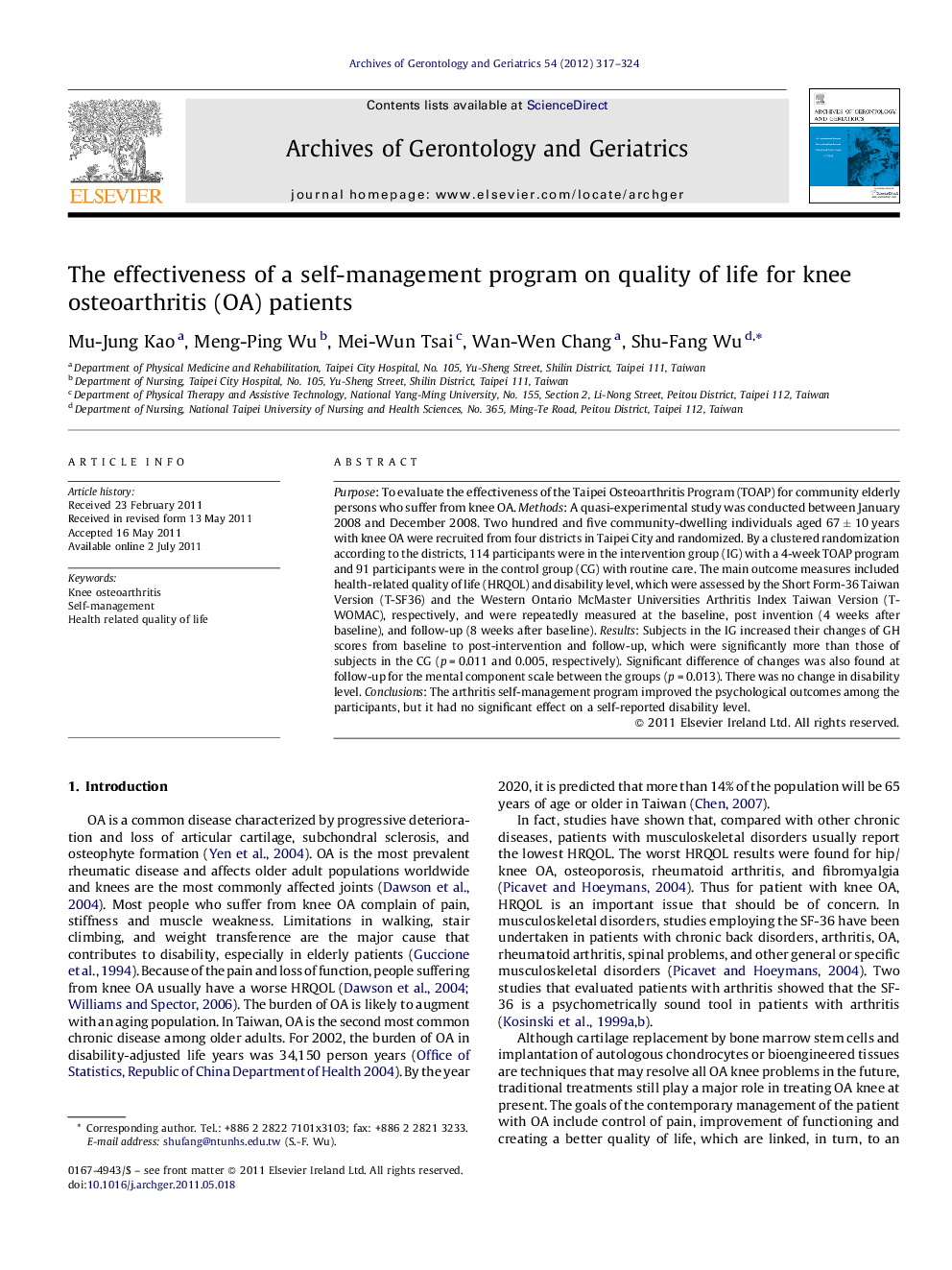| کد مقاله | کد نشریه | سال انتشار | مقاله انگلیسی | نسخه تمام متن |
|---|---|---|---|---|
| 1902972 | 1534450 | 2012 | 8 صفحه PDF | دانلود رایگان |

Purpose: To evaluate the effectiveness of the Taipei Osteoarthritis Program (TOAP) for community elderly persons who suffer from knee OA. Methods: A quasi-experimental study was conducted between January 2008 and December 2008. Two hundred and five community-dwelling individuals aged 67 ± 10 years with knee OA were recruited from four districts in Taipei City and randomized. By a clustered randomization according to the districts, 114 participants were in the intervention group (IG) with a 4-week TOAP program and 91 participants were in the control group (CG) with routine care. The main outcome measures included health-related quality of life (HRQOL) and disability level, which were assessed by the Short Form-36 Taiwan Version (T-SF36) and the Western Ontario McMaster Universities Arthritis Index Taiwan Version (T-WOMAC), respectively, and were repeatedly measured at the baseline, post invention (4 weeks after baseline), and follow-up (8 weeks after baseline). Results: Subjects in the IG increased their changes of GH scores from baseline to post-intervention and follow-up, which were significantly more than those of subjects in the CG (p = 0.011 and 0.005, respectively). Significant difference of changes was also found at follow-up for the mental component scale between the groups (p = 0.013). There was no change in disability level. Conclusions: The arthritis self-management program improved the psychological outcomes among the participants, but it had no significant effect on a self-reported disability level.
► A quasi-experimental study and clustered randomization method was conducted in a community.
► The newly designed program for people with arthritis was based on Bandura's concept of self-efficacy and behavior change.
► The main outcome measures was health related quality of life (HRQOL) and the psychological outcome was improved.
Journal: Archives of Gerontology and Geriatrics - Volume 54, Issue 2, March–April 2012, Pages 317–324